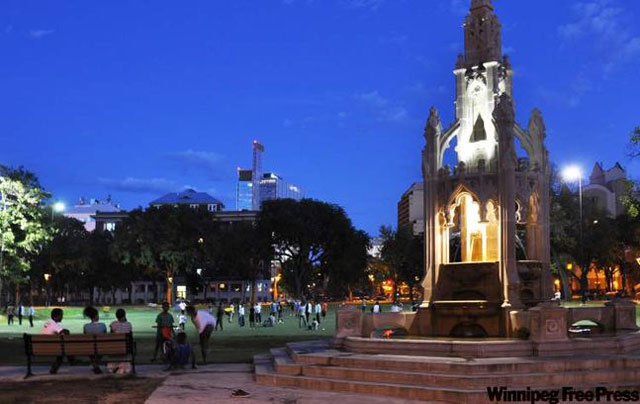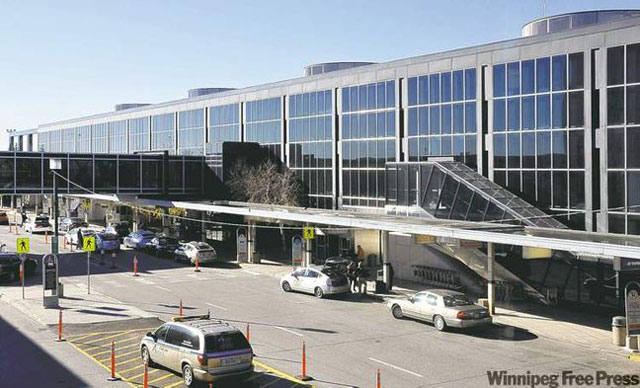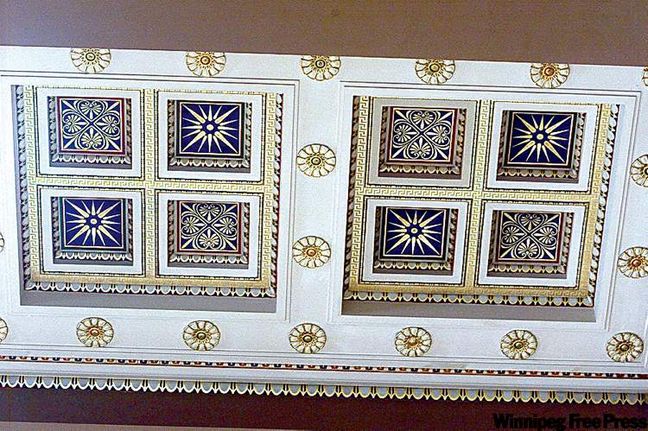Thriving time for city architecture - Leading lights from across globe leaving marks on our landscape
- Details
A Google search of the term 'Winnipeg architecture' yields a colourful grid of thumbnail images that graphically illustrates the city's unique physical character. Instantly distinguishable from similar searches of Edmonton, Calgary or Vancouver, the results portray the familiar kaleidoscope of arched windows, Tyndall-stone columns and reflective glass walls that have come to define Winnipeg's modern built form.
Winnipeg's distinct architectural character is largely the result of unique growth patterns in the last century that saw rapid expansion during the two decades before the First World War and after the Second World War, each followed by long periods of economic stagnation. The city's current urban form has been largely defined by the architectural legacy left by these two distinct boom periods.
Eaton's Building leaves long legacy
- Details
Impact of the historic site not fully realized until recent return of the NHL to the site
In 1902, 3,000 jubilant supporters packed into the Main Street Auditorium to watch the Winnipeg Victorias come from behind to beat the Toronto Wellingtons 5-3, clinching their third and final Stanley Cup championship.
Two years later, that flourishing young metropolis would further cement its reputation as one of Canada's big league cities as the dramatic Eaton's Building began to rise along Portage Avenue. The tenth largest department store in the world, it was estimated in 1960 that 50 cents out of every shopping dollar spent in Winnipeg happened at "the big store." With a floor area nearly double that of the 30-storey Richardson Building, its scale and presence made her a Portage Avenue icon and one of Canada's most significant buildings of the early 20th century.
Modern flair lifts historic park - Concrete and glass a pleasing contrast with ornate stone
- Details

A century ago it was the place for fashionable Winnipeggers to see and be seen. Surrounded by the stately homes of the city's well-to-do, Central Park with its Victorian flower gardens, tennis courts and bandshell stage was the centrepiece of one of Winnipeg's finest residential neighbourhoods.
In 1914, the park would gain a distinctive landmark that stands today as the last remnant of its Victorian beginnings. Local businessman Thomas Waddell was informed three years after his wife's death of an unusual clause in her will stipulating that if he were to remarry, he would be legally required to spend $10,000 building a memorial fountain in Central Park or he would forfeit his claim to her $56,000 estate.
Central Park's makeover has re-established the inner-city facility as the heart of what is now the city's densest and most ethnically diverse neighbourhood.
Modernist buildings have a story to tell - Preserve balance between past and present
- Details

In 2007, the American Institute of Architects launched a public survey to identify "America's Favourite Architecture." With the Empire State Building, the White House and the Washington National Cathedral finishing in the Top 3, the list exposed a strong public connection with heritage buildings. Of the Top 50 favourite structures in the United States, only five were built after the Second World War.
These results raise the question: Do people prefer historic buildings for their character and style or, like a favourite pair of faded blue jeans, is time and familiarity an important factor in the public perception of architecture? Will the steel and glass modernist buildings that replaced these styles be just as well-loved when they are old enough to be considered historic? If so, should we work to protect them in the same way we do the brick buildings of the Exchange District?
Finding Winnipeg's hidden jewels - Downtown filled with historic architecture
- Details

As the calendar moves into the dog days of August, thousands of Manitobans will head out on their summer vacations to explore the architecture and metropolitan character of different cities across the continent. From weekends in Minneapolis or Chicago, to road trips through Ontario and Quebec, many will travel near and far in search of an inspiring urban experience.
Few of us, however, will explore our own city with the same curiosity we display abroad. We often spend our vacations walking the neighbourhoods of distant cities and then return to our hurried lives, rarely slowing to appreciate Winnipeg from that same pedestrian perspective.
The design of the Holy Trinity Anglican Church came as the result of Winnipeg's first international architecture competition.


